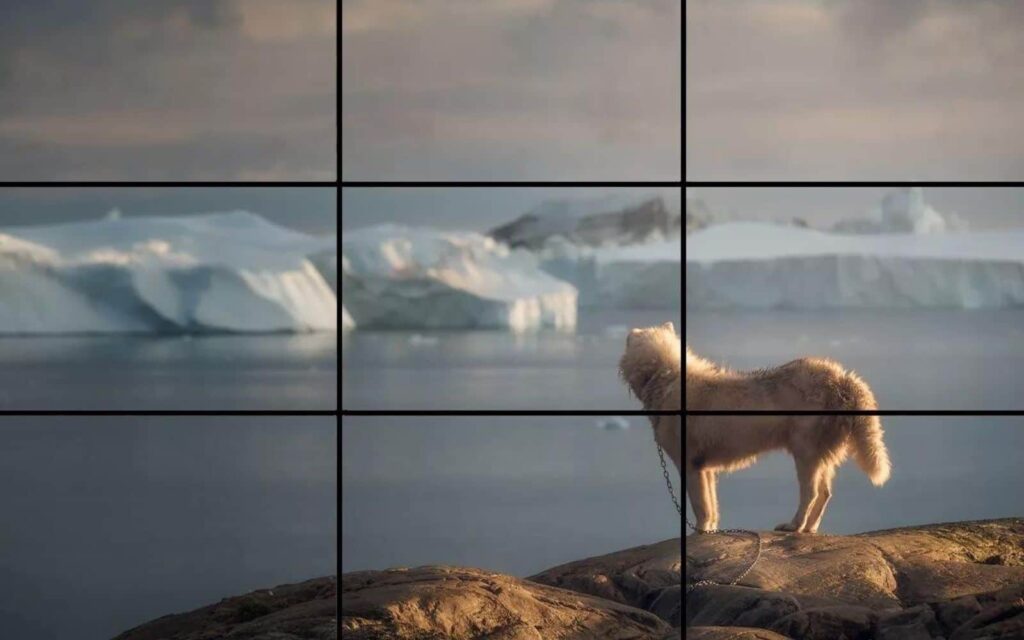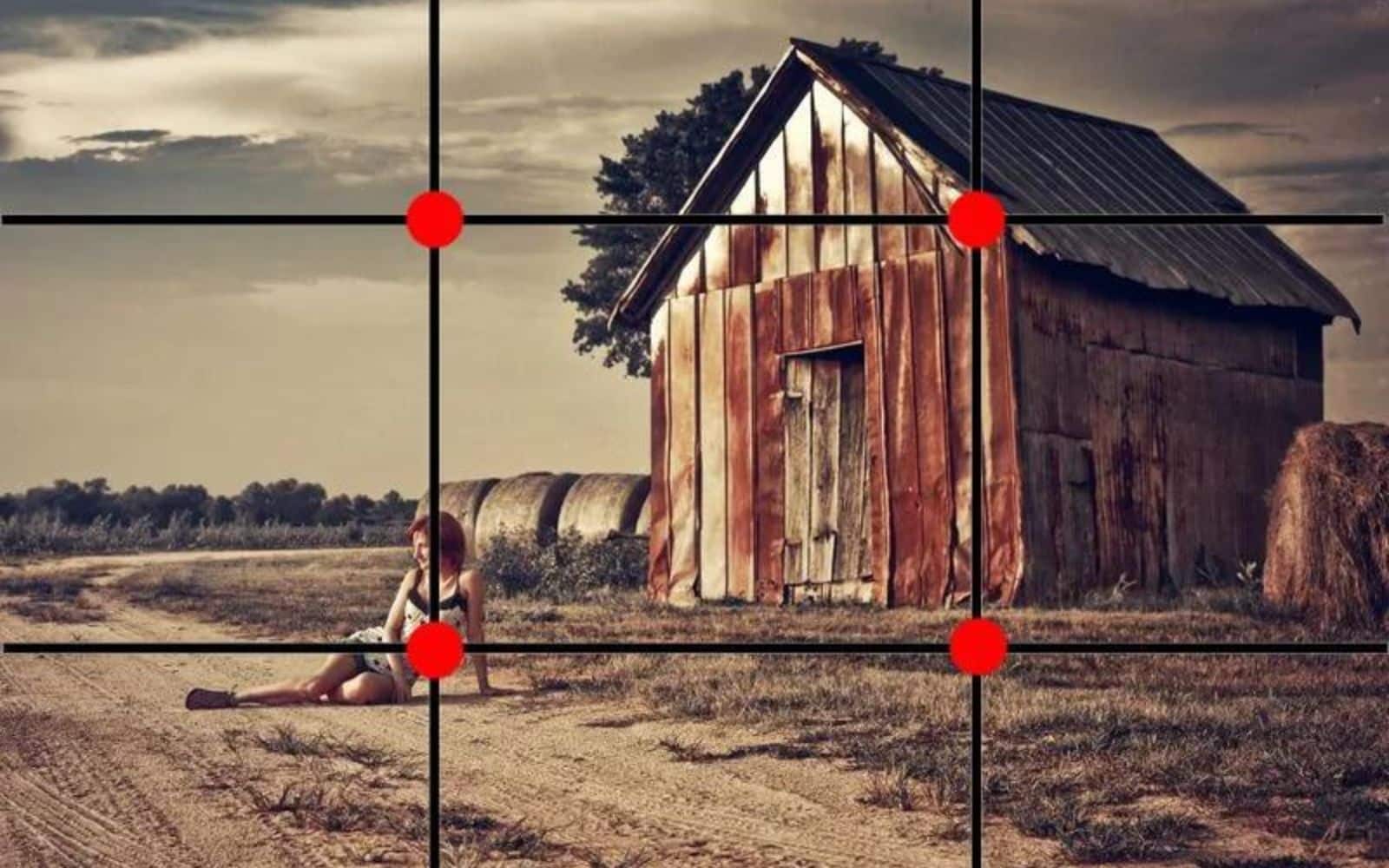The rule of thirds is photography 101 – but should you follow it or break it? This compositional guideline divides images into thirds vertically and horizontally, with subjects placed along these lines or at intersections for aesthetic balance. While useful for many shots, formulas shouldn’t dictate creativity. We’ll explore when the rule of thirds enhances landscapes, portraits, and more by directing the viewer’s eye.
But purposely defying this “rule” allows you to highlight subjects in unconventional, compelling ways. Cropping in post can also improve framing. Understanding when to apply or ignore compositional conventions, with practice, will give you the artistic intuition to capture stunning photos aligned with your vision. So, should you stick to the rule of thirds, or boldly break it? Let’s find out how this simple guideline can strengthen your photography skills and artistry when used judiciously.
What Is The Rule Of Thirds?
The rule of thirds is a compositional guideline for photography and art. It involves mentally dividing an image into thirds vertically and horizontally, creating 2 vertical and 2 horizontal lines. The key subjects or areas of interest in the photo are then placed along these lines or at the points where they intersect. This technique helps photographers achieve asymmetrical balance and focus the viewer’s attention on the main elements, rather than centering them. The off-center balance is considered more harmonious and engaging than central composition.
Why Is The Rule Of Thirds Useful?

The rule of thirds provides a template to compose well-balanced, appealing photographs. Aligning subjects with the guideline intersections or lines creates an intuitive sense of order, stability, and visual interest. It prevents awkward centering and instead guides the eye to the photographer’s focal point in an organic way. Placing important elements directly in the middle can create dull and static compositions. The rule of thirds utilizes the natural tendency to scan images visually in an “S” pattern and positions key parts of the photo within this flow. This technique is useful for a wide range of photography genres and styles.
When Should You Use The Rule Of Thirds?
The rule of thirds is very effective for landscape shots where you want to position the horizon line at the upper or lower intersection point. It also works well for portraits, placing the subject’s eyes at one intersection and having them look towards the other. Wildlife and pet photos benefit when the animal is placed at an intersection or third line rather than centering it. Still life images also gain more aesthetic balance using this technique. In general, photos with a clear primary subject or distinct foreground and background elements are suited for the rule of thirds. It helps highlight the relationship between components through strategic placement.
Breaking The Rule Of Thirds

While the rule of thirds creates balanced compositions, purposefully flouting it can result in bold, striking photographs. Intentionally centering the subject in the middle of the frame draws maximum focus to it. Doing away with the template altogether allows you to highlight patterns, emphasize leading lines, create abstract images, or compose based on intuition rather than formulas. For example, central alignment works well for symmetrical subjects like reflections. Breaking compositional “rules” gives you artistic freedom. However, it helps to understand guidelines first before disregarding them for impact.
How To Use The Rule Of Thirds (With Examples)
To employ the rule of thirds, imagine a 3×3 grid over your viewfinder, then position important compositional elements along the vertical or horizontal lines or their intersections. For example, place the horizon in a landscape either 1/3 from the top or bottom. Frame a portrait subject’s eyes at the upper intersections and have them gaze at the lower point. Put a winding road at the bottom third line leading into the frame. The subject doesn’t need to be exactly on the lines but close to them. Shift your camera position until the composition aligns with the rule of thirds grid. Use it as a starting point, not rigid grades.
Using The Rule Of Thirds In Landscape Photography
For landscape shots, position the horizon line at either the top or bottom third of the frame. This creates a balanced composition between sky and ground. Place focal points like trees, peaks, or subjects at the intersection points to draw attention. Shifting the horizon from the center helps add interest and perspective.
Using The Rule Of Thirds In Portrait Photography
With portraits, have your subject’s eyes at the upper third line and have them gaze towards the lower intersection point. Compose their face at one side’s intersection rather than centering it. Position their body at another point of interest. This creates a balanced triangular composition between the head, eyes and body.
Using The Rule Of Thirds In Wildlife And Pet Photography
For wildlife and pets, avoid centering them in the frame. Instead, position them at one of the intersection points or along a third line to make use of negative space. Capture them looking or moving towards another intersection point for added dynamism and interest.
Using The Rule Of Thirds In Street Photography
For street scenes with multiple elements, position key subjects like people at the intersection points to immediately draw the viewer’s eye. Align secondary elements with the lines to create flow through the scene. Use the grid as a guide, composing scenes intuitively rather than rigidly adhering.
Applying The Rule In Post-Processing
If you didn’t nail the rule of thirds when capturing your photo, you can still improve the composition by cropping in post. Use editing software to overlay a grid and crop to position elements according to the lines and intersections. Slight tweaks can enhance the framing significantly. However, it’s best to compose correctly in-camera when possible, to retain maximum resolution. Post-processing cropping should be a last resort for fine-tuning, not an excuse for haphazard shooting.
The Rule Of Thirds Vs The Golden Ratio
The rule of thirds and golden ratio are similar compositional guidelines. The golden ratio divides frames based on the mathematically pleasing ratio of 1:1.618, creating dynamic spiralling shapes. It provides precise intersection points to position subjects. The rule of thirds is simpler and more intuitive. Its evenly spaced lines and intersections still achieve pleasing balance and flow. The golden ratio offers a more complex template for those seeking geometrical perfection. However, the rule of thirds often suffices to create engaging images.
Should You Break The Rule Of Thirds?
While the rule of thirds produces balanced compositions, creativity sometimes requires breaking conventions. Centered alignment or intentional asymmetry better serves some subject matter. Abstract art disregards rules entirely. Develop your own internal sense of pleasing compositions based on practice and reflection. If the rule of thirds results in cookie-cutter images, disregard it. However, guidelines do cultivate an innate feel for quality framing. Before breaking the rule, learn it. Artful rebellion requires mastery of the fundamentals first.
Not Sure Which Apps Are Best For You?

Unsure which photo editing apps suit your needs and skill level? For quick easy cropping and filters, try Snapseed or Instagram. Lightroom offers powerful editing tools for serious hobbyists. Photoshop remains the gold standard for advanced manipulation. Apps like Over provide unique compositional templates. Find one that aligns with your goals and budget. Don’t get overwhelmed comparing options – choose a user-friendly app and build skills over time. With practice, you’ll determine which tools best bring your creative vision to life.
Don’t Worry, You Can Always Fix It In Post.
“I’ll just fix it in post” shouldn’t be an excuse for mediocre composition. Over-reliance on cropping and editing betrays laziness, not creativity. While post-processing can refine images, optimal framing happens in-camera. Take time to compose thoughtfully before shooting. Study compositional techniques to cultivate instinct. Editing excessively risks degrading image quality or producing artificial-looking results. Use post-processing judiciously to enhance photos, not reconstruct them. The camera’s viewfinder, not the editing software, is the optimal creative frame.
Conclusion
The rule of thirds gives photographers an intuitive starting point to craft visually pleasing compositions. However, no guideline should dictate creativity. While this technique helps balance landscapes, portraits, and more, at times central alignment or complete asymmetry better serves the subject. Developing an innate sense for dynamic framing comes through practice, not formulas. Learn the fundamentals, then disregard conventions for impact. Cropping in post can be refined, but optimal framing happens in-camera. With experience, you’ll know when following or flouting the rule of thirds captures your vision. Keep an open, artistic mindset, and your photography will thrive.
